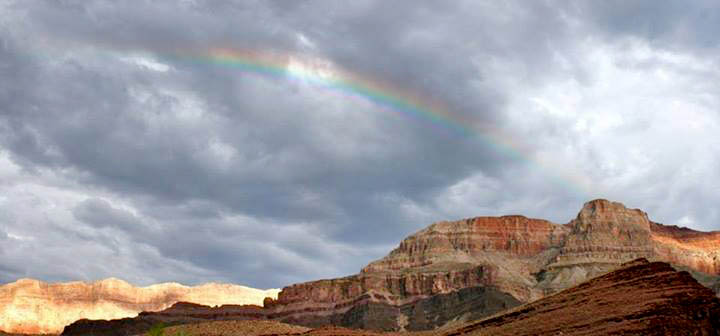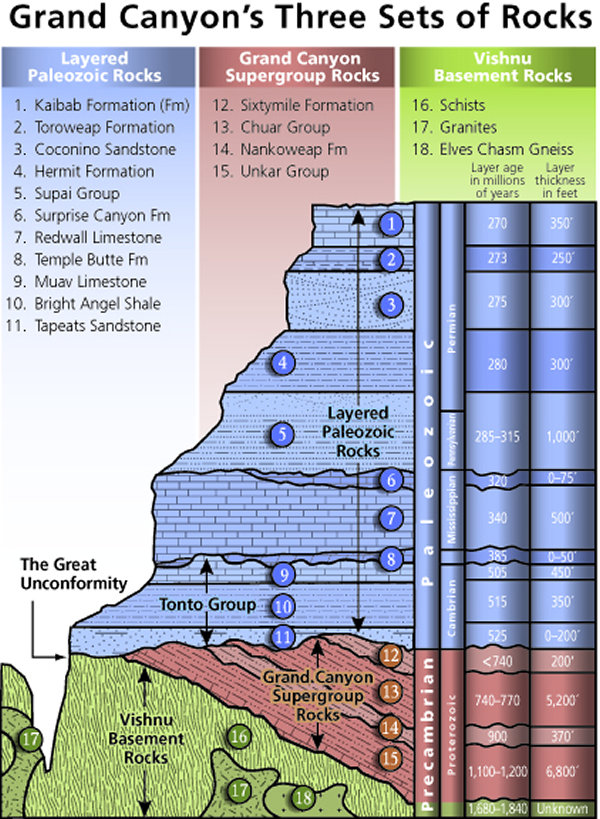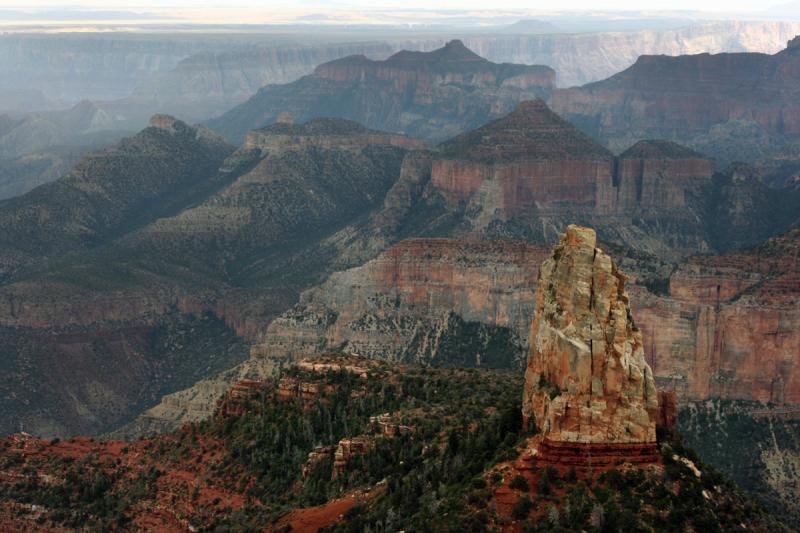Recently Time magazine ran an awful article. (This is a bit like saying Kevin Costner was in a bad film—you’ve got to be more specific.) Time's offense was an uncritical piece by Jeffrey Kluger titled, “Why There Are No Atheists at the Grand Canyon: All it takes is a little awe to make you feel religious.” The thrust of this was that, “there’s nothing quite like nature—with its ability to elicit feelings of jaw-dropping awe—to make you contemplate the idea of a higher power."

photo: Steven Newton
The religious connection with awe in nature is likely true for many visitors to Grand Canyon, including those who subscribe to the young earth creationist view that the rocks of Grand Canyon record the dramatic events before, during, and after Noah’s Flood.
From the metamorphosed basement rocks purported to record the original week of creation, to the tilted and fragmented Grand Canyon Supergroup, whose magnificent distortions testify to the tumultuous violence of the beginning of the Flood, to the flat-lying Paleozoic rocks one so prominently sees from the north and south visitor centers, and which supposedly were deposited during the relatively calm year of the Flood, the creationist geologic story of Grand Canyon is a sweeping gothic tale brimming with divine wrath, the end of the world, and swift, savage sedimentation. It’s quite a story--but it is not what we see in Grand Canyon.

image: National Park Service
The basic idea is this: the lowest rocks of Grand Canyon (green), such as the Vishnu Schist and the Zoroaster Granite, were formed on Day Three of Creation, with the commandment, “Let the dry land appear” (Genesis 1:9). Some creationists pin this event at 4004 b.c. For a while people populated the earth, and sediment formed on this new land; geologists call this sediment the Grand Canyon Supergroup (red).
According to some calculations, the Flood began in the year 2348 b.c. (the timing of which might have rather inconvenienced the reign of Pharaoh Unas of Egypt, though he never complained about it in any of the written records from the time). In Grand Canyon: Monument to Catastrophe, creationist Steve Austin describes what happened next:
Massive erosion occurred as the upheaval moved and flexed great bodies of earth’s crust including [Grand Canyon Supergroup] strata.
Indeed, the Supergroup rocks are tilted and fragmented, though standard geology interprets this as the result of tectonics. Right above this Supergroup lies an erosional contact called the Great Unconformity, which Austin describes as created by “shallow, fast floodwaters...causing intense scouring and erosion of the pre-Flood rocks.”
Once the “fountains of the deep” and the “vapor canopy” had unleashed their aqueous apocalypse upon the wicked world, and Noah and his charges were safely ensconced in their gopher wood refuge, sediments began to settle out on this scoured surface. According to the creationist model, this is how the rocks that most people actually see in Grand Canyon formed. If you’ve only been to the south or north rims of Grand Canyon, these flat-lying Paleozoic strata (blue) are the rocks you saw.

photo: Steven Newton
But how is it that we can see these rocks at all? Clearly something exposed them. Many people misunderstand what creationists say about Grand Canyon, thinking that creationists maintain that the canyon itself was carved by Noah’s Flood, but this is not quite accurate. What young-earth creationists actually claim is that the flat-lying rocks deposited rapidly during the year of the Flood, when all the world was submerged Waterworld-style (a new record: two Kevin Costner references in one post!). These soft layers of sediment were then rapidly cut by the withdrawal of the Flood waters. This rapid erosion allegedly took only days or weeks to carve the entire chasm of Grand Canyon as we know it today.
In their classic 1961 book The Genesis Flood, creationists Whitcomb and Morris posit:
...the sediments all were deposited more or less rapidly and continuously, followed by a single great regional uplift. Subsequent rapid canyon downcutting then ensued while the sediments were still relatively soft.
(How such soft, muddy sediment was able to maintain vertical cliffs hundreds of feet high, instead of just slumping into an inchoate goo, is an engineering question to ponder in another post.)
These allegedly soft rocks had been laid down fantastically quickly in the form of “broad sedimentary deposits from the advance of floodwaters into northern Arizona,” as Steve Austin puts it. It is true that some of the sedimentary units in Grand Canyon have a large areal extent. But could a worldwide flood have deposited these flat-lying rocks? Do the sedimentary features we find in these rocks fit with a Flood model of deposition?
Stay tuned for the answer in part 2…
